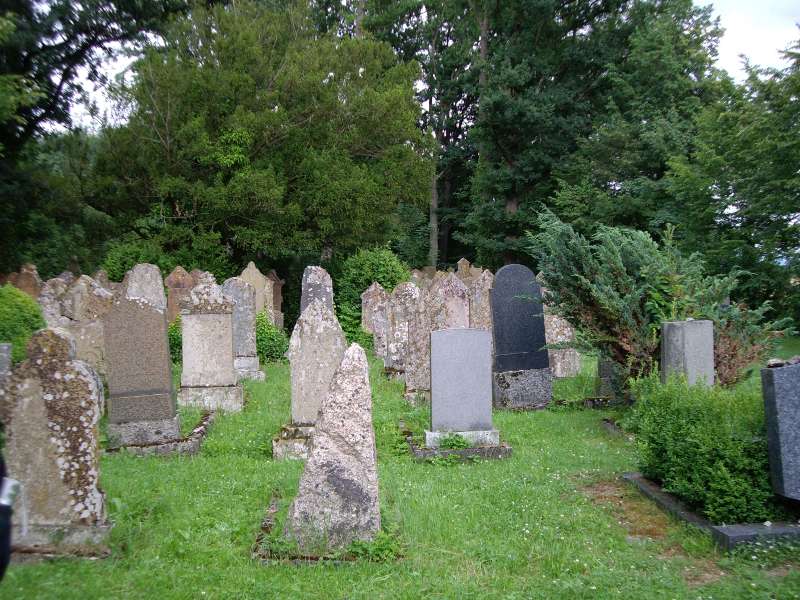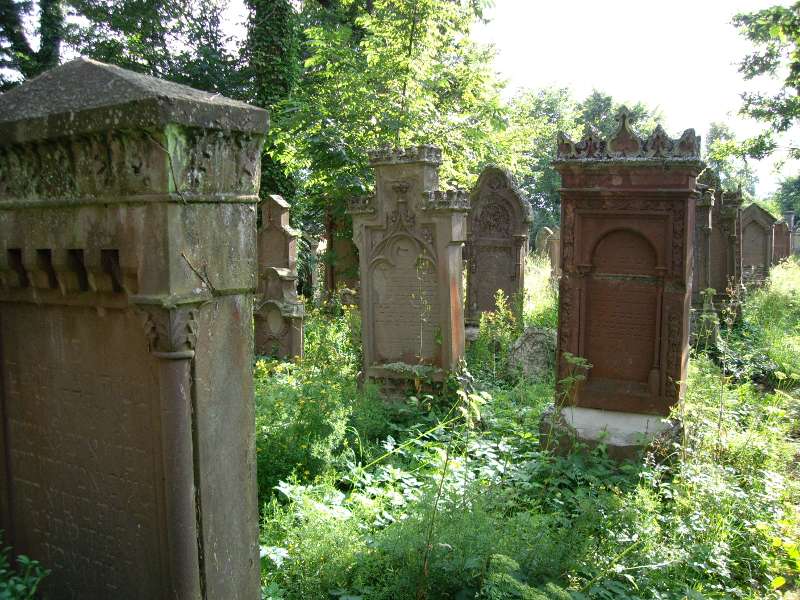 48°28' N 8°56' E. Rottenburg am Neckar is a medium-sized town in the administrative district of Tübingen about 50 km SW of the provincial capital Stuttgart and about 12 km SW of the district town Tübingen. Rottenburg is the second largest city of the district after Tübingen and makes up a secondary center for the surrounding community. Since May 1, 1972, Rottenburg am Neckar is a district town (Große Kreisstadt). Rottenburg agreed to an administrative collectivity with the municipalities of Hirrlingen, Neustetten and Starzach. Wikipedia. Town website. Synagogue and Jewish community history. [Mar 2013]
48°28' N 8°56' E. Rottenburg am Neckar is a medium-sized town in the administrative district of Tübingen about 50 km SW of the provincial capital Stuttgart and about 12 km SW of the district town Tübingen. Rottenburg is the second largest city of the district after Tübingen and makes up a secondary center for the surrounding community. Since May 1, 1972, Rottenburg am Neckar is a district town (Große Kreisstadt). Rottenburg agreed to an administrative collectivity with the municipalities of Hirrlingen, Neustetten and Starzach. Wikipedia. Town website. Synagogue and Jewish community history. [Mar 2013]
 Baisingen is a suburban district of Rottenburg am Neckar in the administrative district of Tübingen in Baden-Württemberg. Baisingen is located 15 km (9.32 mi) west from Rottenburg am Neckar, 4.97 m SE from Nagold and 7.45 mi NE from Horb am Neckar with villages of Mötzingen, Ergenzingen, Göttelfingen, Vollmaringen. Ergenzingen is like Baisingen, is a district of Rottenburg. The old synagogue of Baisingen has been restored. Related pages: Memorial Synagogue Baisingen (side of the city administration Rottenburg) Jewish history. [Feb 2013]
Baisingen is a suburban district of Rottenburg am Neckar in the administrative district of Tübingen in Baden-Württemberg. Baisingen is located 15 km (9.32 mi) west from Rottenburg am Neckar, 4.97 m SE from Nagold and 7.45 mi NE from Horb am Neckar with villages of Mötzingen, Ergenzingen, Göttelfingen, Vollmaringen. Ergenzingen is like Baisingen, is a district of Rottenburg. The old synagogue of Baisingen has been restored. Related pages: Memorial Synagogue Baisingen (side of the city administration Rottenburg) Jewish history. [Feb 2013]
From 1596 to 1938, a Jewish presence was in the district of Rottenburg Baisingen. Since 1778 a Jewish cemetery existed and with the 1784 synagogue was the second important testament to Jewish life in Baisingen. Several houses in the village on the main road belonged to Baisingen Jews in the 19th century. They shape today's village. The Baisinger synagogue interior was destroyed in 1938 in the Kristallnacht pogrom . Later used as a barn until it was reopened in 1998 as a memorial. After the restoration, of all phases of architectural history are visible. Information: Department of Culture of Rottenburg at Obergasse 12. 72,108 Rottenburg am Neckar. Phone: 0 74 72 / 165-351 tours by appointment: Adolf Hug, tel 07457/1826. [Mar 2013]
72108 Baden-Württemberg (Gerz, Peters).
LOCATION OF CEMETERY 1: in ROTTENBURG.
- Between the old southern and eastern City moat, near today's Sprollstrasse. Cemetery now empty.
- Dating back to the 13th/14th century. First mentioned in records in 1286, again in 1348 during the plague and also throughout the 14th and 15th century. The first register for Jewish burial levies is dated 1494.
- Müller 1981, pages 37-38
- More information in Germania Judaica II/2, pages 719 and III/2, pages 1277, also Hahn 1988, page 546).
LOCATION OF CEMETERY 2: in BAISINGEN (about 10 miles west of Rottenburg).
- Galgenweg (at the edge of woods, Gewann Im Tannen). (Overview). photos. The cemetery established in 1778 has the oldest of the more than 400 graves dating from 1782. The cemetery's gate is locked.
IN USE: From 1778 onwards.
DOCUMENTATION:
- 1987 by Institutum Judaicum - copies of all gravestone inscriptions.
- 1987 by City of Rottenburg archives – photographs of all gravestones.
- 1991 photographs of all gravestones with mapping of graves by Zentralarchiv.
- 2000 cemetery documentation including above 1987 photographs and records by the Office for Historic Monuments (Landesdenkmalamt ed. Thomas Lehnardt).
- Numerous photographs of individual gravestones and general cemetery views in Alemannia Judaica.
- Photographic survey by Württemberg 1932, page 56.
- Paul Rieger and Willie Moegle: Jüdische Gotteshäuser nd Friedhöfe in Württemberg publ.2002 by Haigerloch: Medien und Dialog Klaus Schubert 142 pages ISBN 3-933231-82-5 (LBI).
- Up to 1778 burial for this community took place in the cemetery of Mühringen (Sauer 1966, page 47).
- There is a large memoral in this cemetery since 1948, recording the names of the members of the Jewish community of Baisingen who were murdered during the Nazi era 1933–1945, donated by Harry Kahn, who had returned to the city.
[Researched and translated from German October 2008]
Update: The following text supplied by Shaul Sharoni: "The cemetery itself is well kept by the locals, and is thus not overgrown. It's rather small and sprawls over a few dunams, encircled by a solid fence and an entrance gate; older gravestones are often illegible but intact, and the last burial there took place in 2005-I think it was the one and only Holocaust survivor who actually returned to Baisingen after the War. His son, so I was told, is living somewhere in that area,
Now, studying German for the past 6 years is what brought me to receive a scholarship and take part in the Jewish Life in Germany Programm 2008
("Jüdisches Leben in Deutschland") from the 12th to 26th July, organized by the Tubingen University. Along with 19 other participants from Israel, mostly university students, we attended language classes combined with full-day excursions-the first one was to Hechingen and Baisingen.
Today there are no Jews living at the village, though the renovated synagogue, which was used as a barn for many years, now serves as a silent monument and museum of the flourishing Jewish community it once housed-on its upper floor is a most interesting exhibition of photos and texts in German on the village's Jewish population. The photos date back, in my opinion, at least 90-100 years ago. In the adjoining room they also show a short documentary film featuring Baisingens who immigrated to Israel. This exhibition is remarkable and most impressive in my viewpoint." [date?]
And Mr. Sharoni also supplied the following photographs:
To see information and photographs of individual gravestones in cemeteries in Baden-Wuerttemberg, click on this link and follow the directions on that page.


